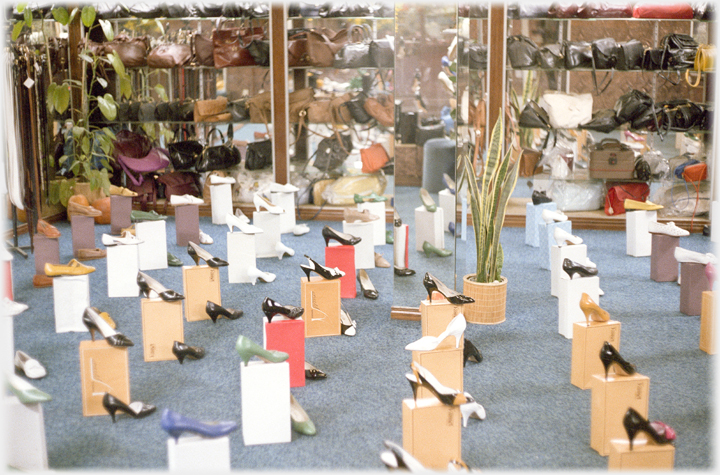
Stigma
Social settings establish the categories of persons likely to be encountered there. The routines of social intercourse in established settings allow us to deal with anticipated others without special attention or thought...While the stranger is present before us, evidence can arise of his possessing an attribute that makes him different from others in the category of persons available for him to be and of a less desirable kind...not all undesirable attributes are at issue, but only those which are incongruous with our stereotype of what a given type of individual should be.
Erving Goffman (1963)

Maybe not elegantly, but Goffman puts his finger on a vital dynamic of
social interaction.
 A rather different aspect of the way social relationships develop.
If we had to meet each new person as an individual and assess them from scratch, society would ossify - all our time being spent in calculation and questioning. We must use stereotypes, simplifications, even caricatures to be able to get on with
social life.
A rather different aspect of the way social relationships develop.
If we had to meet each new person as an individual and assess them from scratch, society would ossify - all our time being spent in calculation and questioning. We must use stereotypes, simplifications, even caricatures to be able to get on with
social life.
 However, such assessments are not relevant once we have an established relationship.
Taking a step back we could see this observation, in social psychology, as an epitome for consciousness. Just as stereotypes enable our social worlds, so consciousness enables the world. Human minds operate with a model, a model that is constantly being challenged and updated by our sensations. Consciousness is a forum for active fine tuning of the model - using incoming information. When the information is in harmony with the model, we can get on, but dissonance requires us to adjust, to reinterpret, even to fight or flee! We might see the
Comparator Model
However, such assessments are not relevant once we have an established relationship.
Taking a step back we could see this observation, in social psychology, as an epitome for consciousness. Just as stereotypes enable our social worlds, so consciousness enables the world. Human minds operate with a model, a model that is constantly being challenged and updated by our sensations. Consciousness is a forum for active fine tuning of the model - using incoming information. When the information is in harmony with the model, we can get on, but dissonance requires us to adjust, to reinterpret, even to fight or flee! We might see the
Comparator Model
 An introduction to the Comparator Model of consciousness.
of consciousness as being like a gigantic all embracing stereotype of the world.
An introduction to the Comparator Model of consciousness.
of consciousness as being like a gigantic all embracing stereotype of the world.
The quote is from page 11/12 and 13 of the Penguin 1968 edition of his book Stigma: Notes on the Management of Spoiled Identity.
The photograph of a shop window was taken in Spain 40 years ago. It has been tampered with! Toes point right, that is the norm, the rule, the stereotype; one shoe has been reversed, and, despite a plethora of information, it stands out, you can spot it at once.
Above, hovering on blue introduces a link: click to go, move away to stay.

Saturday 11th May 2024
 ...guide to this site
...guide to this site